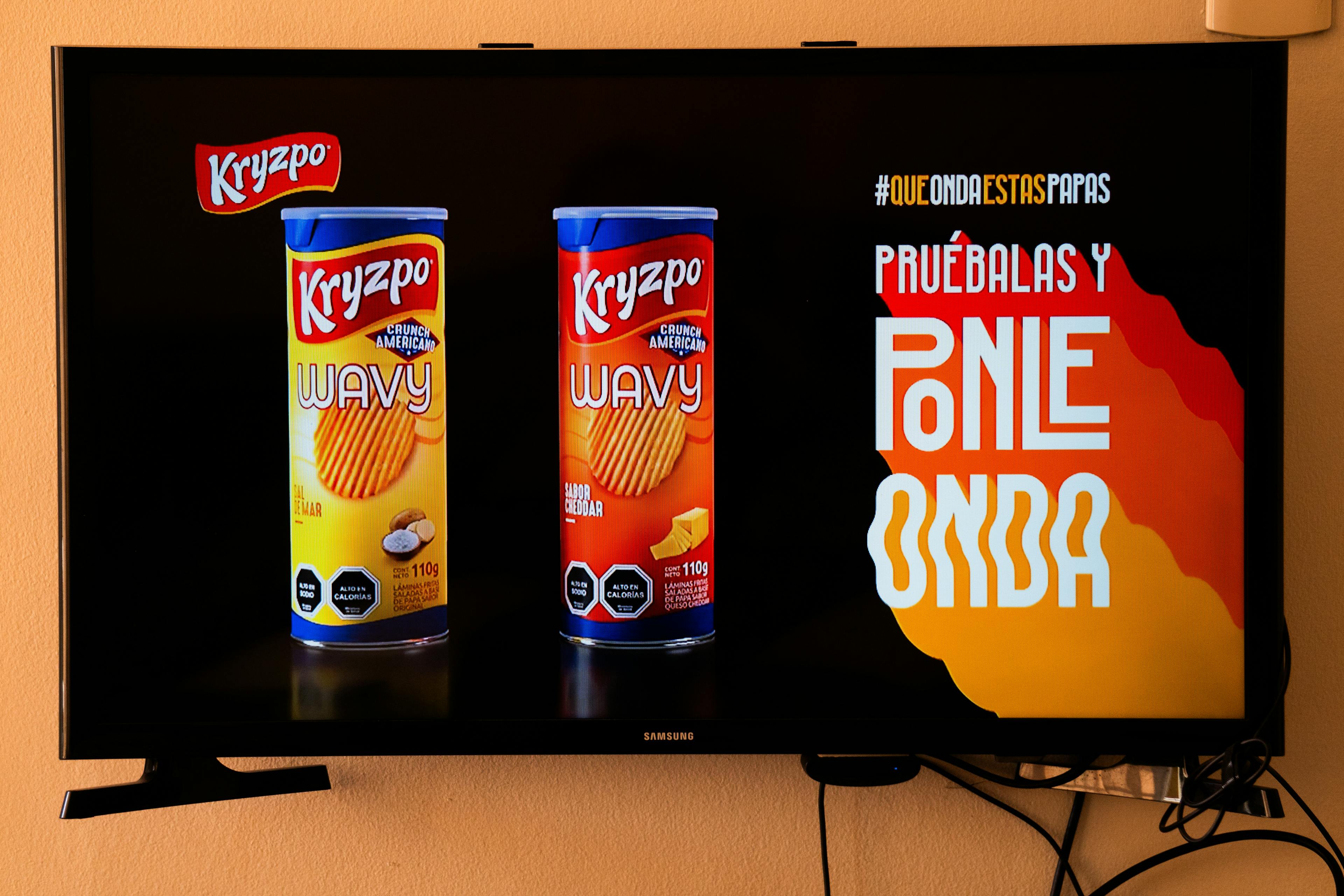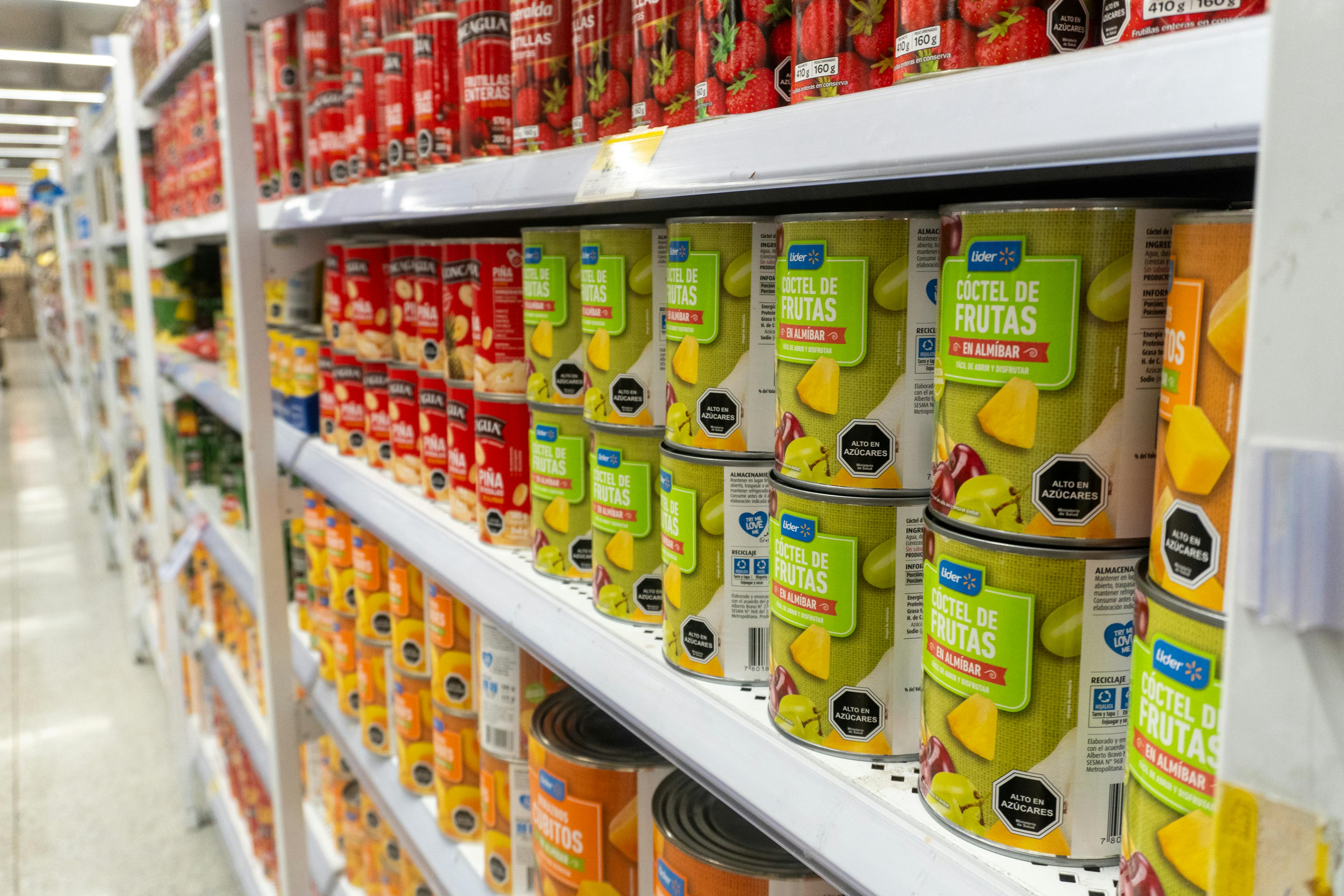This story was co-published with The BMJ.
A decade ago, Chile began to tackle its soaring obesity rates with a law that has proved a model for other countries to follow.
Through introducing a comprehensive range of measures, including taxes on sugary drinks, warning labels on unhealthy foods and bans on junk food in schools, it hoped to curb obesity and the debilitating diseases associated with diets high in sugars and fats that follow.
Eight other countries, covering most of South America as well as Mexico and Canada, have followed Chile’s lead and introduced similar front-of-package labels, with some going further and implementing marketing restrictions and sugar taxes in an effort to improve their citizens’ health. In 2022, the U.S. Food and Drug Administration said it is also considering front-of-package label warnings for some foods it deems unhealthy, a move criticized by major food manufacturers including General Mills, renowned for brands like Cheerios and Häagen-Dazs, and Kellogg’s, known for its breakfast cereals and snacks like Pringles and Pop-tarts.

While studies show Chileans are choosing products with less sugar, fat and salt, sometimes cutting purchases of sugar in foods by as much as 25%, the country of more than 19 million people still faces a crushing health crisis. The obesity rate for adults over 15 years old actually increased in the first years after the law was implemented from about a quarter of the population to more than a third — with rates among children also rising. According to Chilean government data, child obesity rates increased from 16% in 2009 to more than 26% in 2022.
The latest population-wide data on obesity rates, which would show whether the policies have had an effect in the longer term, has not been made public.
The food industry says that the fact obesity rates have not fallen is evidence the measures were futile. But public health experts say that linking the success of the measures to the short-term rise or fall of obesity rates is a mistake.
Chile's food law, which the Chilean Health Ministry says enjoys broad public support, vastly reduced sales of unhealthy foods in school kiosks and is linked to a significant decline in consumption of food items with warning labels. It can take decades for the impact of the measures to show up in obesity rates, experts note.
Obesity rates are also linked to many other societal and economic factors, they say. Chile's rate may continue to increase, but some posit that without the measures, it might increase even faster.
“OK, maybe the obesity rate keeps rising, but we don’t know the counterfactual,” Pablo Villalobos, a Chilean public health and policy consultant, referring to a situation where the food law had not been implemented. Without the policies “it could be worse,” he said.
Radical new policies in Chile and beyond
The story of Chile’s health crisis is intertwined with its rapid economic advancement. After emerging from a repressive dictatorship in the 1990s, Chile modernized, privatized and opened to foreign investment. A service sector workforce grew, lifestyles became more sedentary, women began working outside the home in large numbers and multinational grocery chains expanded. The result: Chileans started feasting on packaged goods, fast food and prepared meals.
Since the early 21st century, Chile’s population has gotten heavier and heavier. By 2010, about 64% of the adult population in Chile was considered overweight or obese. Chile’s government and its public health sector sounded the alarm bells.
In 2012 the government passed a law, called simply “the Food Act,” which tried to reverse some of those social, cultural and dietary trends. It took years from passage to implementation, with different measures implemented at different stages, and pushback from the food industry. The sugar tax came into effect in 2014. A big advancement was a Chilean Health Ministry regulation, implemented in 2016, mandating food products that are deemed high in sugar, sodium, saturated fat or calories carry a front-of-package label with an ominous-looking stop sign to warn consumers.

The label, seen as the first of its kind, prompted countries across Latin America to follow suit, and requirements for stop sign labels have been widely adopted in the last several years.
The label serves somewhat as an anchor for the rest of the law. TV ads touting unhealthy foods, the ones that bore the stop sign labels, were banned from 6 a.m. to 10 p.m. to limit children’s exposure. Meals served at schools, where the majority of Chilean children eat lunch, were required to meet new health and nutrition standards, and school kiosks could no longer sell food bearing stop sign labels. Public health campaigns emphasized the virtues of eating healthily and exercising. In late 2014, the government also raised the tax on sugary drinks from 13% to 18%, while simultaneously lowering the tax on drinks with less sugar.
Changes in companies, consumers, and kids

Public health researchers and the Chilean Ministry of Health have pointed to positive changes in the law’s wake.
“After the implementation of the law, we have seen product reformulation, a decrease in the sales of some products, changes in what families are purchasing, and what children are consuming,” said Fernanda Mediano, an assistant professor in the psychology department at Pontificia Universidad Catolica in Chile who has researched the law’s effects.
There is more than 80% compliance with the law, from schools to big producers, and consumers are making choices based on front-of-package labels, said Cristian Cofre, a technical advisor in the public health division of the Chilean Health Ministry. These results vindicate the major points of the law, he said.
Companies have reformulated products like crackers and cereal to cut down on sugar, salt and fat and to avoid being slapped with the damning stop sign label on their packaging. Consumers are also buying fewer products that are high in fat, salt and sugar. A study by researchers from the University of North Carolina and the University of Chile, for example, found Chileans reduced their sugar intake by more than 10% after the implementation of the new labeling regimen in 2016.
Consumers especially ditched sugary beverages, a welcome change because Chileans are some of the biggest guzzlers of soda in the world. Another study from Berkeley Economics, which has yet to be peer reviewed, showed a decrease of calorie-rich and sugar-heavy food per dollar spent following Chile’s implementation of its labeling law.
Cofre said that Chilean children are some of the biggest beneficiaries of the changes brought by the law. “Surveys show that children’s understanding of unhealthy ingredients influenced the purchases of their parents. This is very important,” he noted.
Reducing exposure to marketing is key, noted Cofre; one study found that children’s exposure to sugary drinks and foods on TV dropped by 73% in the aftermath of the law’s implementation, and kids saw many fewer ads featuring cartoon characters and other kid-friendly figures hawking unhealthy foods.
“Kids' exposure to unhealthy foods in schools radically changed,” said Lindsey Smith Taillie, associate professor of nutrition at University of North Carolina Gillings School of Global Public Health, who worked with Chilean researchers to create the food law and has worked on numerous studies evaluating it. She pointed to a study carried out in Santiago, Chile’s capital, which showed sales of such foods in school kiosks dropped from 90% to 15% within six months of the law's introduction in 2016.
The law also gave Chileans greater transparency around what goes into their food, said Taillie. “Consumers don't know what's in their food, and they deserve to have that information,” she said.
The policies were well-regarded among the public health community and sparked change in other countries. “Chile is the success story,” said Gary Sacks, co-director of the Global Centre for Preventive Health and Nutrition at Deakin University in Melbourne, Australia. “Their government has a comprehensive package of policies that they have implemented.”
Some of these countries built on Chile’s example and introduced even more comprehensive policies. Mexico, Argentina and Colombia have gone further, for example, flagging products with artificial sweeteners to consumers and curtailing marketing aimed at children with bans on cartoon characters on packaging.
“We learned from what has happened in the region,” said Andrea Graciano, coordinator of a scientific and nutrition institute at the University of Buenos Aires in Argentina, noting that Argentina’s 2021 regulation built on the experiences of Chile and Uruguay. “We learned from their successes and also their mistakes; we tried to put all of that together in one law, and I think we did it right,” she said.
Measuring changes in obesity rates could take decades
Critics of the law, including industry leaders, lawyers and advocates, note that the changes have been “negligible,” and that while consumer attitudes may have shifted, this has not led to demonstrable change.
“There is no evidence that any of these policies reduce obesity, and given that that’s the whole point, that’s a problem,” said Baylen Linnekin, food historian and adjunct professor at George Mason University Law School. “They can cause people to buy less of something – but they may just be switching to different products,” he said.
Most food labeling laws and policies do not come with ways to evaluate change, or time projections for reduced obesity numbers, Linnekin noted. “Something that should be built into these policies, even if I disagree with them, is a measurement system,” he said. (While Chile’s law did not specify a time frame for a reduction in obesity, the Chilean Health Ministry does study the law’s effects, often in conjunction with international researchers.)
A representative of the Food and Beverage Association of Chile declined an interview with The Examination. But large food manufacturers in other countries have weaponized what they view as a disconnect between government regulation and health outcomes in their fight against soda taxes, front-of-package labeling and other anti-obesity measures. They also argue that the measures have failed to reduce obesity rates and related health outcomes, and emphasize exercise as a critical deterrent to obesity.
Even public health researchers acknowledge Chile’s ambitions have fallen short in notable ways. Some food and beverage companies, for example, were able to get around the country’s sugar labeling requirements by using artificial sweeteners.
The regulation covered foods high in sugar, fat and salt, but not other ultra-processed foods which we now know are linked with obesity, added Taillie. Ultra-processed foods which are usually mass-produced and contain ingredients that would not be found in a regular kitchen. Introducing stop sign labels for ultra-processed foods is one of the ways the law could be strengthened, she said.
Many people supportive of the measures believe it could be years, even decades, before health outcomes are affected.
Health outcomes trail behavioral change, noted Sacks, the Australian health expert. “A slowing down in the [obesity] rate is what you would expect,” from the 2012 law, he said.
Even the possibility of stasis for Chile is a scary prognosis. If the country’s obesity rate climbs at its current rate between 2020 and 2030, about 117,000 Chileans will die from obesity-related noncommunicable diseases, a recent study by Chilean researchers calculates. And early indications show the Chilean obesity rate has not slowed, and may have increased. The government has yet to release its most recent population-wide health statistics, which it collects in a national health survey every six years.
Cofre, of the Chilean Health Ministry, said it is still too early to tell if the policies will impact children, the biggest targets of the law. “The nutritional change for this generation, those who are children today, you can’t evaluate in five or six years, but in 25 to 30 years, or more, when health outcomes start to develop: cancer, cardiovascular disease,” he said. “It’s much more in the long term when the children of today are the adults of tomorrow; but the changes of today will affect who they are.”
Mediano, of the Pontificia Universidad Catolica, said that improving the obesity rate is only possible with vast, structural change, and the legislation was not designed to change all the determinants of obesity – nor could it.
Future efforts, Mediano noted, could provide subsidies to encourage Chileans to reduce their dependence on packaged foods and eat more fruits and vegetables. Other efforts could dissuade Chileans from choosing foods with artificial sweeteners and other additives, or reduce internet marketing to kids, which is not included in the current law.
“The change is in the right direction, although it has limitations,” she said. “We cannot expect one regulation to change the nutritional status of the population; that status comes from years of efforts,” said Mediano. “We cannot expect that a regulation will change tendencies in one, two or three years. Our goal is to improve the food environment, and we need to see if we can actually improve the food environment.”
The University of North Carolina Global Food Research Program, whose research is cited in this story, received funding from Bloomberg Philanthropies, which also supports The Examination. Please see The Examination’s editorial independence policy.
